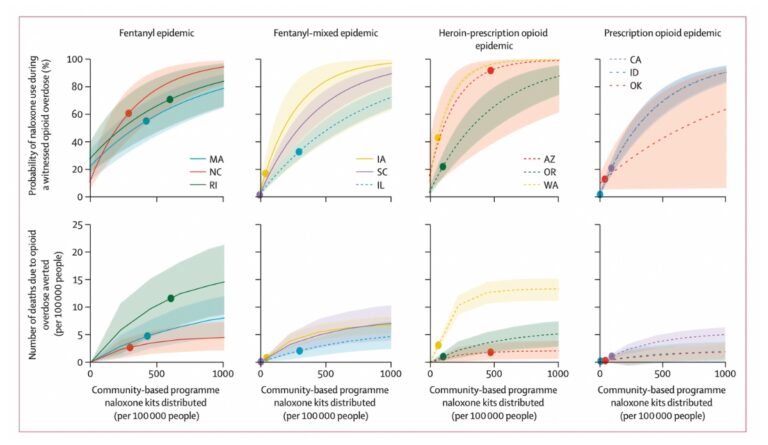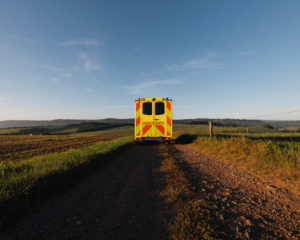Naloxone Needed
Increasing access to naloxone through community-based programs is key to preventing overdose deaths in the United States.

Read Time: 2 minutes
Published:
More than 100,000 people died of a drug overdose in 2021. Fentanyl, commonly mixed into heroin, and more recently into other drugs like cocaine, is responsible for at least half of all overdose deaths. Opioids drive this public health epidemic. Increasing access to naloxone, commonly known as Narcan, is key to preventing overdose deaths. Narcan is an emergency nasal spray that can reverse the effect of opioids and restore breathing in cases of an overdose. Narcan is increasingly available to drug-users and other members of the public in communities where overdoses are happening, but it is still not available enough.
Michael Irvine and colleagues developed a mathematical model to estimate how many naloxone kits are needed to avert 80% of overdose deaths that occur when another person is present and able to administer naloxone. The team used data on naloxone distribution and overdose deaths from 12 U.S. states.
The team found that opioid use “epidemics” differed across communities; some people mostly used fentanyl, others used fentanyl mixed with other drugs, some used heroin, and some used prescription opioids. The probability of an overdose witness delivering naloxone to the person overdosing varied by opioid use pattern and by the naloxone access point.
The top panel of the graph describes how likely a witness is to use naloxone for a possible overdose. These findings vary across states and opioid use epidemics. Overall, the probability of someone using naloxone is highest for fentanyl-related overdoses and lowest for prescription opioid overdoses.
Acquiring naloxone at community-based programs, like supervised injection sites or syringe exchange programs, was associated with the highest potential of a witness acting. The bottom panel of the graph shows the number of deaths that could be averted by distributing naloxone through community-based programs across epidemic types.
The authors argue that by increasing naloxone access among bystanders, particularly through community-based programs, and supporting other harm reduction efforts, the U.S. can substantially reduce overdose deaths.
Databyte via Michael A. Irvine, Declan Oller, Jesse Boggis, et al. Estimating naloxone need in the USA across fentanyl, heroin, and prescription opioid epidemics: a modelling study. Lancet Public Health, 2022.



